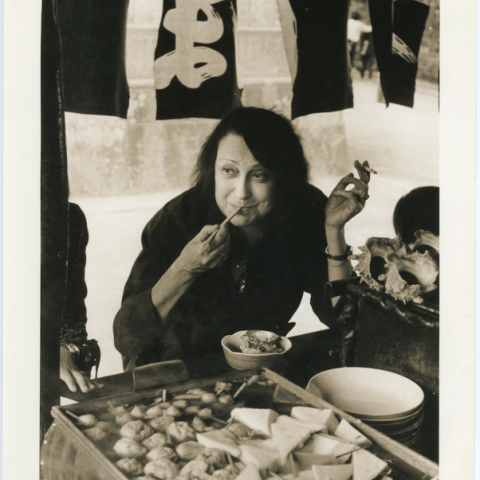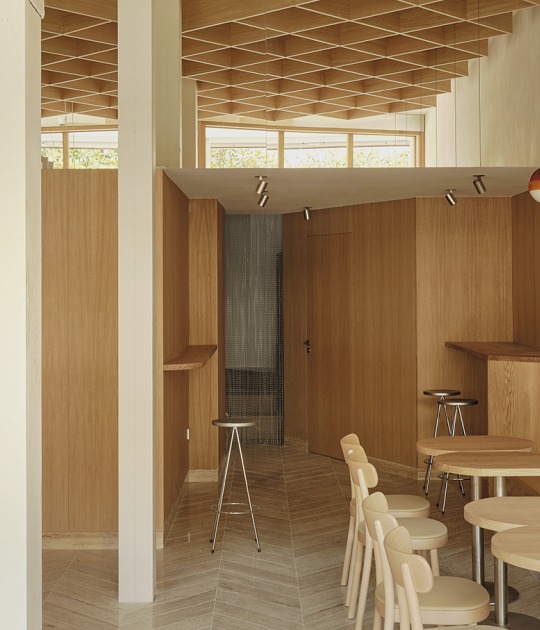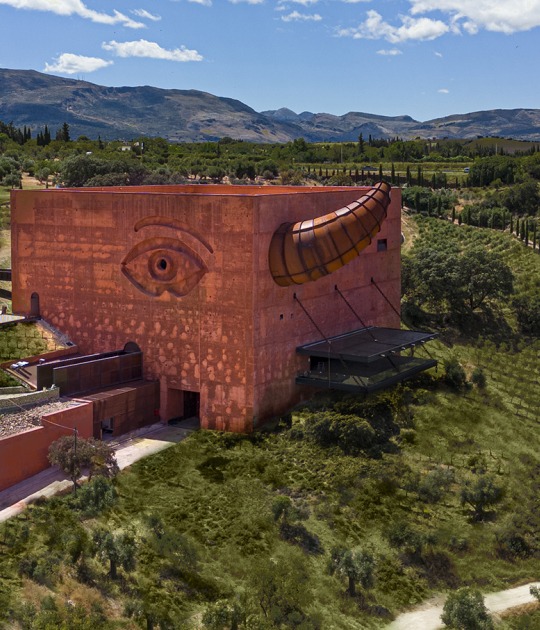‘The artist’s freedom has always been “individual”, but true freedom can only be collective. A freedom aware of social responsibilities, which can knock down the frontiers of aesthetics…’
LBB
Lina Bo Bardi: Together pays tribute to the Italian architect who moved to her adopted Brazil in 1946 leaving an impressive legacy. This exhibition celebrates Lina’s capacity to engage with every facet of culture and to see the potential in all manner of people. Curated by Naomi Blager, the exhibition presents artworks by Madelon Vriesendorp (one of the founders of OMA and wife of Rem Koolhaas) and films by Tapio Snellman recreate Lina’s work and allow a more direct experience through a form of re-enactment. Photographs of Casa de Vidro (The Glass House) by Ioana Marinescu show the objects (from toys and shells to art and recycled things) that Lina chose to display in the house she lived in with her husband Pietro Maria Bardi.
In the theatre, a stage comes to life when the actors begin to perform. So it is with Lina Bo Bardi’s architecture. Her buildings are vibrant when inhabited: they come to life with the energy, diversity and creativity of people.
Born in Rome in 1914, Lina’s extraordinary legacy as an architect, set designer, editor, illustrator, furniture designer and curator, has yet to be fully acknowledged.
Lina moved to São Paulo in 1946. But the turning point came in 1958–1964 when, living in Salvador de Bahia, she found the roots of Brazil’s popular culture. Lina managed to successfully integrate the values of the Modern Movement with popular culture.
She applied sophisticated construction techniques learned from local craftsmen to her design for the Museu de Arte Popular do Unhão. She also planned the creation of a crafts centre and an industrial design school. In her words: ‘It was to be a Museum of “Art” as an “Art”, that is, to “do things”, everyday happenings.’
Years later, in São Paulo, Lina was commissioned to design SESC Pompéia, a leisure centre built in an old factory. She organised space without hierarchy: swimming was deemed as important as learning weaving, a jazz concert, or playing chess. She created a culture of convivial diversity that continues today: inclusive environments where the old and the young interact.
Noemí Blager, Curator.
Bo Bardi’s integrity and desire for a lack of hierarchical division is portrayed in the eclectic nature of the exhibition: artifacts found in local Brazilian markets alongside carefully crafted objects; films shot in Bo Bardi’s Pompéia project in São Paulo are projected into a reflective pool of water. The interactive installation, consisting of various-sized concrete blocks, pays tribute to Bo Bardi’s playful use of the material and was designed by the London-based Assemble Studio. It is accompanied by three Bowl Chair, designed by Lina in 1951
The exhibition hosts at the DAZ Berlin -after traveling London, Vienna, Paris, Stockholm, Basel and Amsterdam- is made possible by Arper, who today manufacture the Bowl Chair. The DAZ creative director is Matthias Böttger.
Where.- DAZ | Deutsches Architektur Zentrum. Köpenicker Straße 48, 10179 Berlin, Germany.
When.- from 13 June to 17 August 2014. Opening times.- Wednesday – Sunday 14.00 to 19.00 h.
CREDITS
Curator.- Noemi Blager
Art installation.- Madelon Vriesendorp
Film installation.- Tapio Snellman
Exhibition design & build.- Assemble
Sponsor.- Arper

































